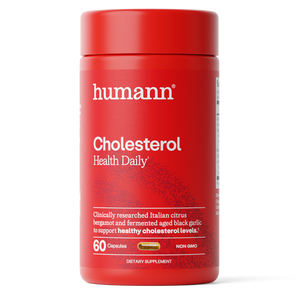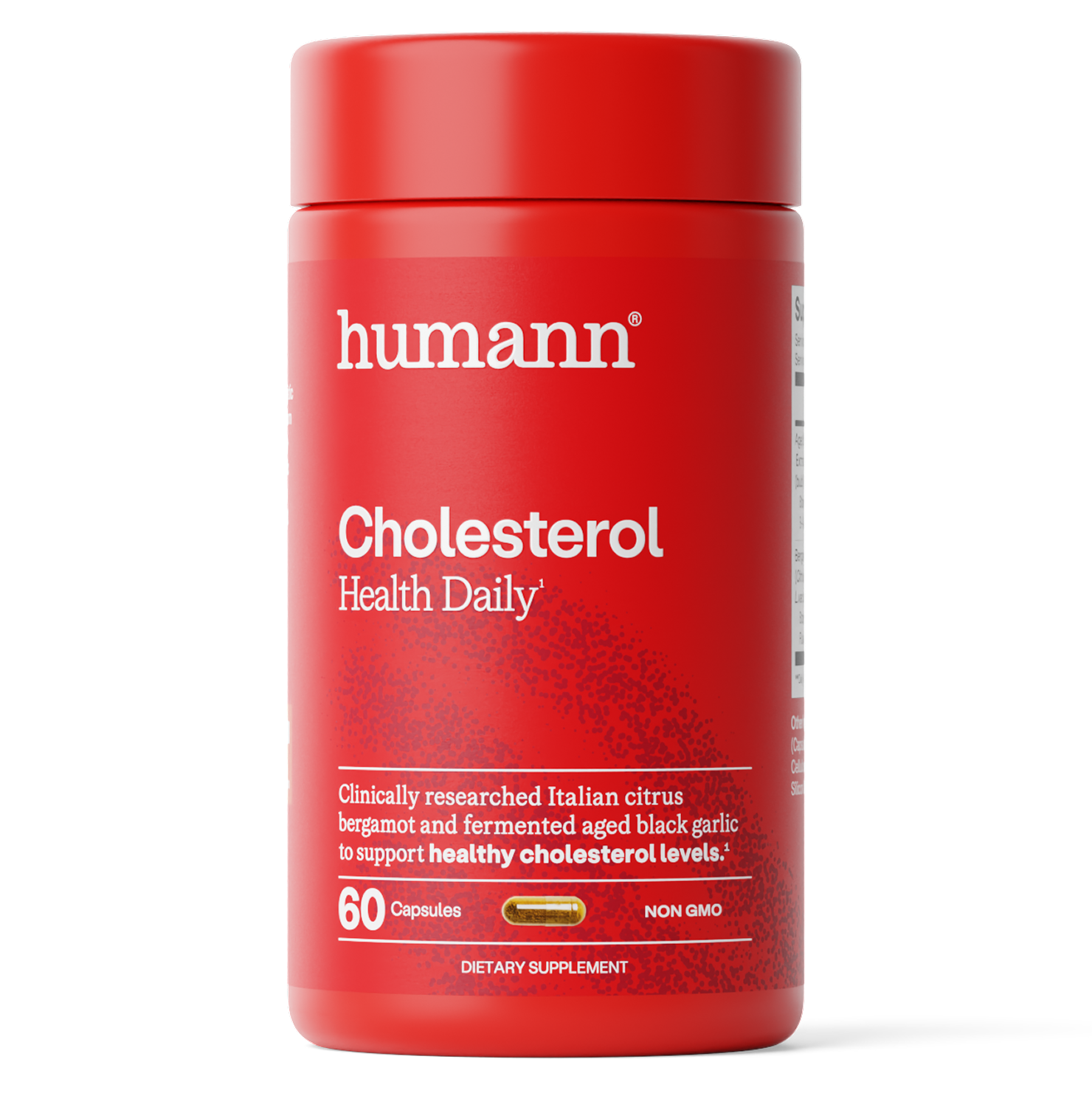A Registered Dietitian Nutritionist Shares The Reason Why Metabolic Health Matters for your Heart
by Michelle Routhenstein, MS RD CDCES, CDN, Cardiology Dietitian at of EntirelyNourished.com
Did you know that you may be metabolically unhealthy even if you are at a normal weight or body mass index? A recent study showed that one in eight Americans are cardio-metabolically unhealthy, even in normal weight individuals. 1 And why does this matter? Metabolic health and heart health are intertwined, and heart disease is the number 1 killer globally. 2 You have the opportunity to decrease your risk of heart attacks by 80-90% through science-based nutrition and lifestyle medicine, but first we have to know if it affects you, personally.
To start, we have to look beyond your physical weight for so many reasons. As a preventive cardiology dietitian, I have seen two types of responses from doctors regarding weight and unfortunately both can lead to misconceptions regarding your cardiometabolic health.
When someone is thin, they are often dismissed by their doctor of “having nothing to worry about,” and when someone is overweight that is typically what the doctor focuses on, “if you lose 10 pounds, _(fill in the blank)_ will be resolved.” Heart disease and chronic conditions do not discriminate based on weight, and you can be cardio-metabolically unhealthy at all body weights.
In this article, we will discuss what metabolic syndrome is, what it means for cardiovascular health, why it matters, and what are three things you can do today to optimize your cardiometabolic health.
What is metabolic syndrome?
While the term metabolic syndrome may not sound sexy or be in your standard vocabulary, it is a very common condition that I often see in my heart disease centered private practice, and it is likely you have heard of the pieces that it includes. One-third of Americans above the age of 20 years old have metabolic syndrome and most of these conditions do not have any signs or symptoms you can feel or see on a day-to-day basis. 3,4
Metabolic syndrome is when you have at least three or more of the following conditions:
- Increased waist circumference, also known as abdominal obesity.
- You would be surprised as to how many people in my practice have an increased waist circumference and do not even know it (you can be a normal weight and have an increased waist circumference too!). Many people think your waist circumference is your pants size, but it is actually around your belly button. The weight around the belly button is surrounding your visceral organs making it more metabolically active.
- If it is higher than 40 inches for men, or 35 inches for women in the general population, that is considered elevated.
- In certain populations like South Asians these parameters are stricter.
- High blood pressure, above 130/85mmHg, or taking blood pressure medications.
- High blood pressure is known as the “silent killer” because it can be silently elevated and damage your blood vessel health leading to a stroke or heart attack.
- If you experience an elevated blood pressure reading at your doctor’s office, it may be attributed to anxiety in a medical setting, also called white coat syndrome. However, only 15-20% actually have white coat syndrome, and high blood pressure can often be masked as such. Be sure to test your blood pressure at home to control and optimize your values to be less than 120/80mmHg for optimal cardiometabolic health.
- High fasting blood sugar levels, greater than 100mg/dL or taking blood sugar lowering medications.
- You can have high blood sugar levels and not feel it either, however, some people do. If you feel lethargic after you eat, your body may have a hard time processing sugar and it may be a sign you have elevated blood sugar levels.
- High blood sugar levels may also be accompanied by frequent urination, increased thirst, always feeling hungry, feeling very tired, blurry vision, or slow healing of cuts and wounds.
- High blood triglyceride levels above 150mg/dL.
- High triglycerides often are associated with elevated blood cholesterol and/or blood sugar levels, and may be a sign of insulin resistance – a cardio-metabolic marker.
- High density lipoprotein (HDL) cholesterol levels less than 40mg/dL for men and less than 50mg/dL for women.5
- HDL is a protective type of cholesterol that may impart antioxidant and anti-inflammatory effects in the blood vessels. Low levels can be a sign of inflammation, which negatively affects both metabolic and heart health.
When three or more of these values are present, it is a sign that there is a hampering on your body’s ability to respond to food in a productive way, causing substances to linger in the blood vessel and lead to potential damage in the arteries that can negatively impact your cardiovascular health. Let’s go through what happens in the blood vessel when each of these parameters are elevated.
What it means for cardiovascular health?
It is important to note that metabolic syndrome is associated with 2x the risk of cardiovascular disease, heart attacks and strokes. 6 The number one leading cause of heart attacks and heart disease related deaths is atherosclerosis, which is caused by plaque accumulation in the arteries. Plaque is the buildup of fats, cholesterol and other substances in the artery walls leading to thickening and narrowing of the blood vessels.2
In my private practice, I have seen hundreds of individuals have a heart attack, or have confirmed plaque in the arteries. All of these individuals had one or more of these physiological abnormalities that are associated with metabolic health that causes this plaque to form in the arteries, sometimes leading to a cardiovascular event.
Let's review these together, and know that we can address them through proper nutrition and a whole person approach to lifestyle management:
- Insulin resistance: Metabolic syndrome is also known as insulin resistance syndrome. Insulin resistance is a sign that insulin is unable to work effectively. When insulin’s function is impaired, it causes blood sugar to linger in the bloodstream where it does not belong instead of being utilized by the body and placed into the cells. This causes the blood to become sticky and can cause more plaque to form in the arteries. 7
- Inflammation: When any of the above parameters are elevated, it can be a sign that there are excess substances in the blood stream along with additional pro-inflammatory substances that cause low grade inflammation. Low grade inflammation is one of the main causes of blood vessel health aggravation and can make the plaque become more unstable and dangerous leading to a blockage of blood flow and a subsequent heart attack. 7
- Neurohormonal activation: Metabolic syndrome can cause a negative impact on adipokines, which is a family of hormones that play a role in appetite, satiety, energy expenditure, fat distribution, blood sugar and fat metabolism, insulin and inflammation. When you have a cluster of the above conditions, it leads to a dysregulation of these hormones that can cause more plaque to form in the arteries. 8
Why does it matter?
Research shows that more than 80% of heart disease is preventable through science-based nutrition and lifestyle management. By taking action to address the above parameters with nutrition, physical activity, sleep, and stress management you can improve your metabolic and heart health. 9
Improving your cardiometabolic health can help significantly reduce your risk of heart attacks, strokes, diabetes, and other chronic conditions.
Three takeaways to implement today to become more cardio-metabolically healthy:
- Measure your waist circumference. While most of my clients are fixated on the number on the scale, or a body mass index rubric for ideal weight for height, your waist circumference can tell us a lot more about your cardio-metabolic health. When this is elevated, it is an indication for insulin resistance, and underlying inflammation that needs to be assessed.
- To measure your waist circumference, take a soft measuring tape and locate your navel or belly button. Stand in a neutral position, try not to suck in or suck out your stomach, and measure your waist circumference.
- If above 40 inches for a man, or above 35 inches for a woman, targeting your abdominal region will be beneficial. It is important to note some ethnicities such as South Asians have stricter guidelines where waist circumference is recommended to be less than 35 inches for men and 31 inches for women.
- Assess your blood test trends from year to year. Most people rely on their physician to tell them “everything looks good, see you next year,” but I often see clients after they have a heart attack with a long history of abnormal blood tests that nobody told them about. Please request your labs, review them, assess the trends, and optimize them every year. Blood test ranges are wide and variable, and if they are going in the wrong direction, use that as a sign to be more proactive.
- Take a whole person approach to your health. If you are an avid runner or exercise enthusiast, it does not give you a free pass on nutrition, and visa versa. We need to address all aspects of health in order to assist our body in metabolizing and utilizing nutrients for optimal cardiometabolic function. This include science based nutrition, physical movement, stress, sleep, hydration, alcohol consumption, and smoking cessation. Take a stand back and see which categories of optimal health you could improve and take action today for optimal metabolic and heart health!

Michelle Routhenstein, MS RD CDCES, CDN, Cardiology Dietitian
References:
- Araújo J, Cai J, Stevens J. Prevalence of Optimal Metabolic Health in American Adults: National Health and Nutrition Examination Survey 2009-2016. Metab Syndr Relat Disord. 2019 Feb;17(1):46-52. doi: 10.1089/met.2018.0105. Epub 2018 Nov 27. PMID: 30484738.
- Roth GA, et al,; GBD-NHLBI-JACC Global Burden of Cardiovascular Diseases Writing Group. Global Burden of Cardiovascular Diseases and Risk Factors, 1990-2019: Update from the GBD 2019 Study. J Am Coll Cardiol. 2020 Dec 22;76(25):2982-3021. doi: 10.1016/j.jacc.2020.11.010. Erratum in: J Am Coll Cardiol. 2021 Apr 20;77(15):1958-1959. PMID: 33309175; PMCID: PMC7755038.
- Saklayen MG. The Global Epidemic of the Metabolic Syndrome. Curr Hypertens Rep. 2018;20(2):12. Published 2018 Feb 26. doi:10.1007/s11906-018-0812-z
- National Institute of Health. National Library of Medicine. Metabolic Sydrome. Acccess Link: https://medlineplus.gov/metabolicsyndrome.html. Date Accessed June 2, 2022.
- Huang PL. A comprehensive definition for metabolic syndrome. Dis Model Mech. 2009;2(5-6):231-237. doi:10.1242/dmm.001180
- Mottillo S, et al. The metabolic syndrome and cardiovascular risk a systematic review and meta-analysis. J Am Coll Cardiol. 2010 Sep 28;56(14):1113-32. doi: 10.1016/j.jacc.2010.05.034. PMID: 20863953.
- Rochlani Y, Pothineni NV, Kovelamudi S, Mehta JL. Metabolic syndrome: pathophysiology, management, and modulation by natural compounds. Ther Adv Cardiovasc Dis. 2017;11(8):215-225. doi:10.1177/1753944717711379
- Zhang H, Cui J, Zhang C. Emerging role of adipokines as mediators in atherosclerosis. World J Cardiol. 2010;2(11):370-376. doi:10.4330/wjc.v2.i11.370
- American Heart Association. CDC Prevention Programs. Access Link: https://www.heart.org/en/get-involved/advocate/federal-priorities/cdc-prevention-programs. Accessed June 2, 2022.















